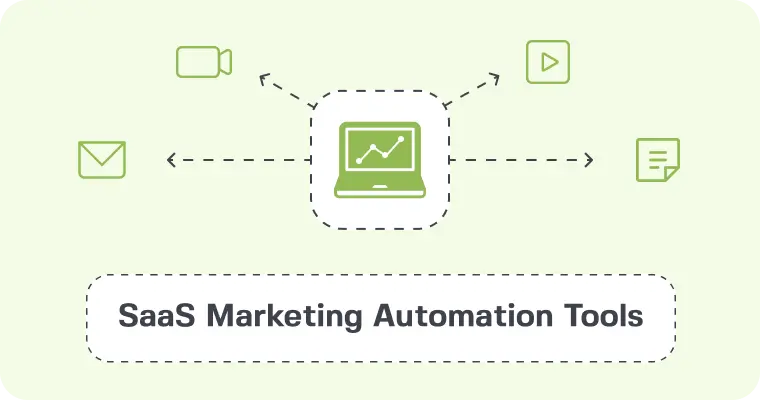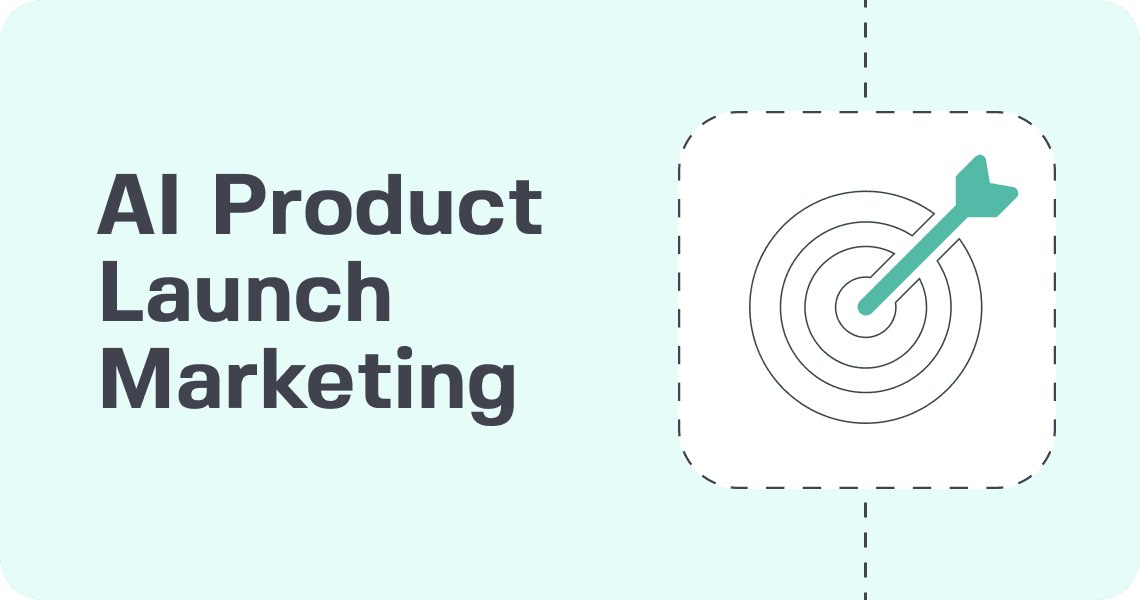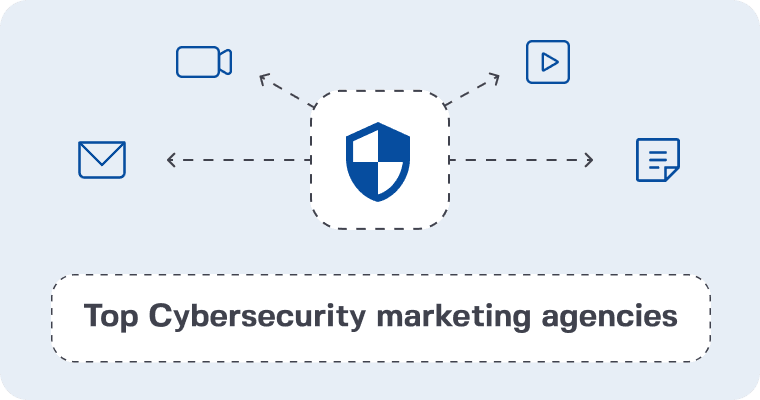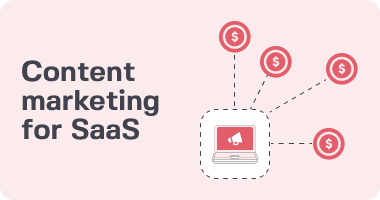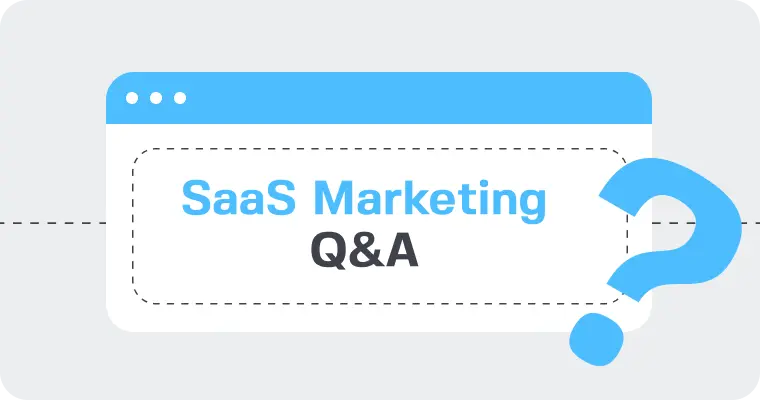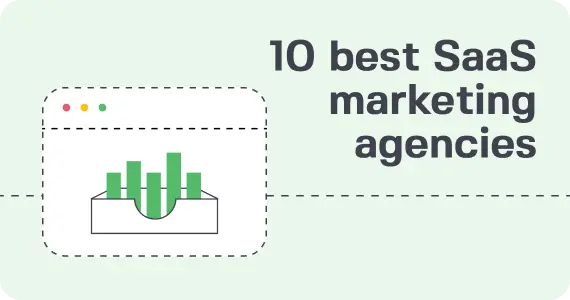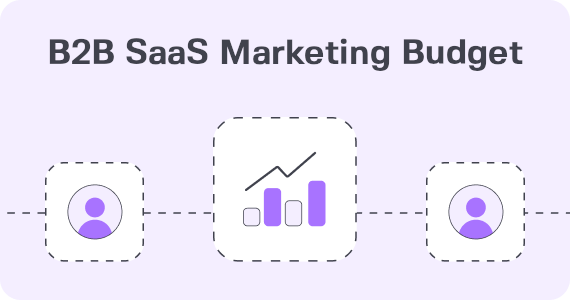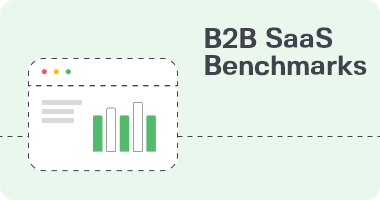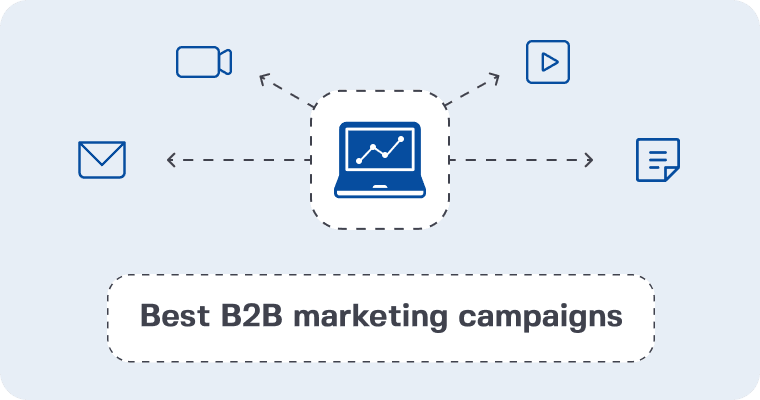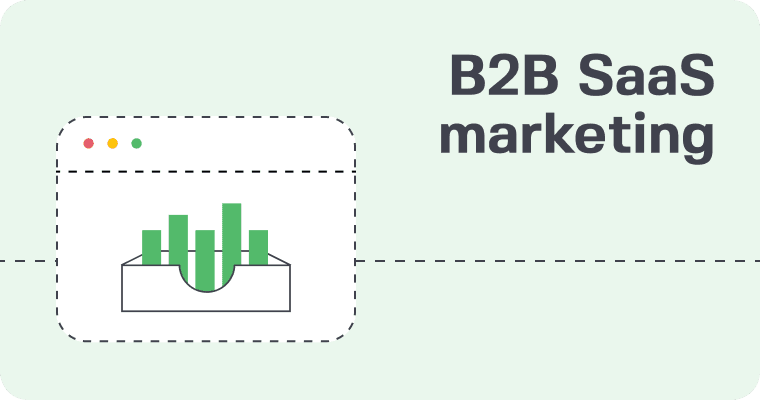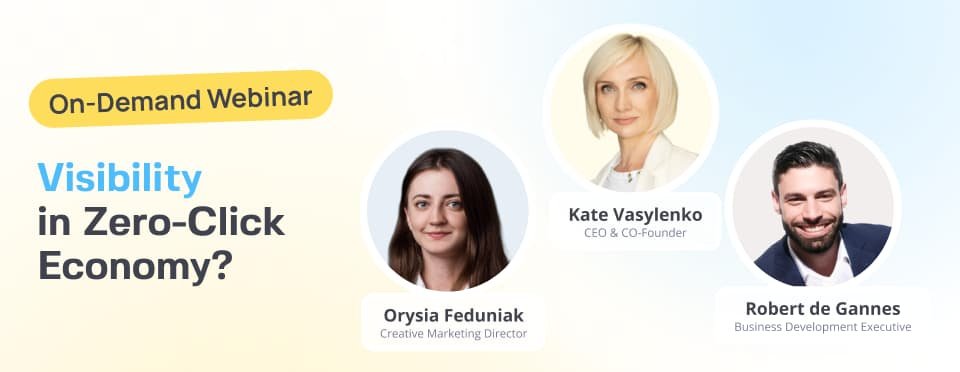PPC advertising is a critical growth driver for SaaS companies. In 2023, the global SaaS market was valued at approximately $273.55 billion, with projections reaching $908.21 billion by 2030, reflecting a compound annual growth rate (CAGR) of 18.7%. However, with increasing costs and competition, it’s essential to approach PPC strategically. Whether you’re using Google Ads or LinkedIn Ads for your SaaS business, optimizing campaigns is key to ensuring that every dollar spent delivers tangible results.
At 42DM, we’ve worked with SaaS brands to fine-tune their PPC strategies, helping them turn clicks into long-term customers. With our experience, we’ve identified the most effective tactics for 2025 and are excited to share these insights to help you get the most out of your SaaS ads.
Set clear goals to optimize your PPC campaigns
For your PPC campaigns to work effectively, it’s important to have clear, measurable goals. Without them, it’s easy to lose track of your budget and fall short of expectations. By defining specific objectives, you can keep your spending in check, measure progress, test new ideas, and make sure your goals align with your advertising costs.
In SaaS, performance marketing works best when your goals are connected to your product funnel. Start with simpler actions, like clicks or form submissions, and gradually aim for more significant outcomes, like subscriptions or actual purchases. These goals will guide your campaigns and ensure that every ad dollar is spent wisely.
It’s also helpful to establish benchmarks for performance. By measuring your results against these benchmarks, you can quickly identify what’s working and what’s not. This allows you to optimize your approach and keep improving over time.

Build an effective PPC landing page
When you’re paying per click, the landing page your visitors land on is just as important as the ad that brought them there. It’s essential to provide relevant and engaging content from the moment users click. Optimizing your landing page not only improves your PPC quality score but also boosts conversion rates. By aligning the content with your ad, you increase the chances of turning visitors into leads and customers.
A key part of landing page success is offering something of value. Whether it’s a discount, a free resource like an eBook or PDF, or showcasing your product’s standout features, your offer should be front and center. Focus on what sets your product apart from competitors to generate interest right from the start.
Your landing page should feel like a natural extension of your ad and guide visitors seamlessly through the funnel. Keep the design clean and intuitive, aligning the user interface and experience with your main product website. Ensure that the page loads quickly, is mobile-optimized, and works across all browsers.
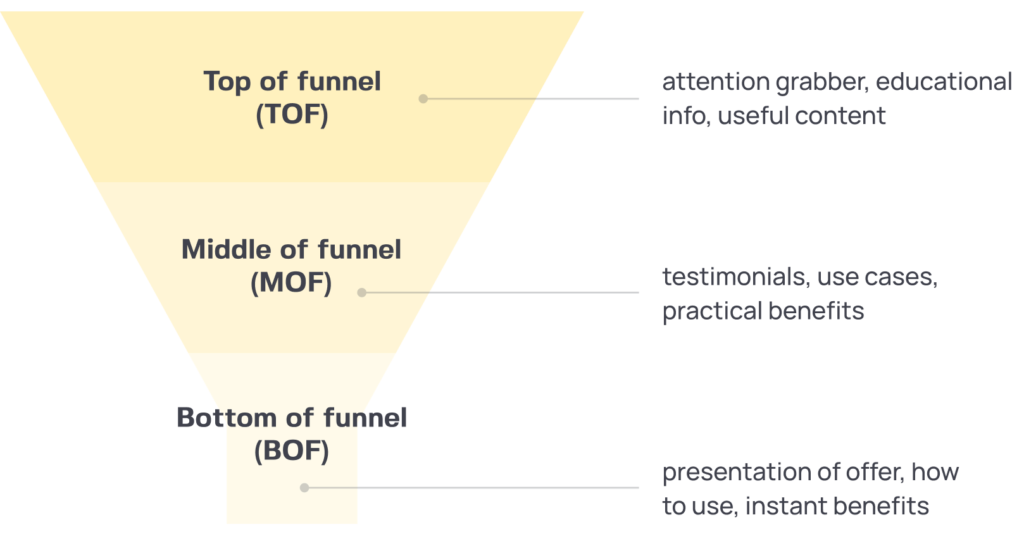
To get the most out of your landing page, test different approaches. Run A/B tests to find which elements—such as copy, images, or call-to-action buttons—drive the best results. Use tools like session recorders and heatmaps to understand how users are interacting with the page, so you can refine and improve the experience over time.
Develop your keyword strategy
Choosing the right keywords is one of the most impactful decisions you’ll make for your PPC campaign. You need to target terms that will bring in people who are either actively searching for solutions like yours or exploring related topics that could lead to a conversion.
Start by researching keywords that are relevant to your SaaS product, using tools like Semrush or Ahrefs to understand what’s working for competitors and industry leaders. Once you’ve gathered your keywords, group them into categories based on where they fall in the customer journey: top, middle, or bottom of the funnel.
- Informational keywords are best for reaching users in the research phase. These tend to be less expensive but also result in lower conversions. Use them to build brand awareness and attract users who are just starting to look for solutions.
- Commercial keywords target users closer to making a purchase decision. They are typically more expensive but can result in a higher conversion rate. Examples include specific product searches like “buy PDF editor” or “monthly subscription for CRM.”
- Competitor keywords allow you to capture interest from users already familiar with similar brands. This is a good opportunity to highlight what makes your product different, such as better features, pricing, or customer service.
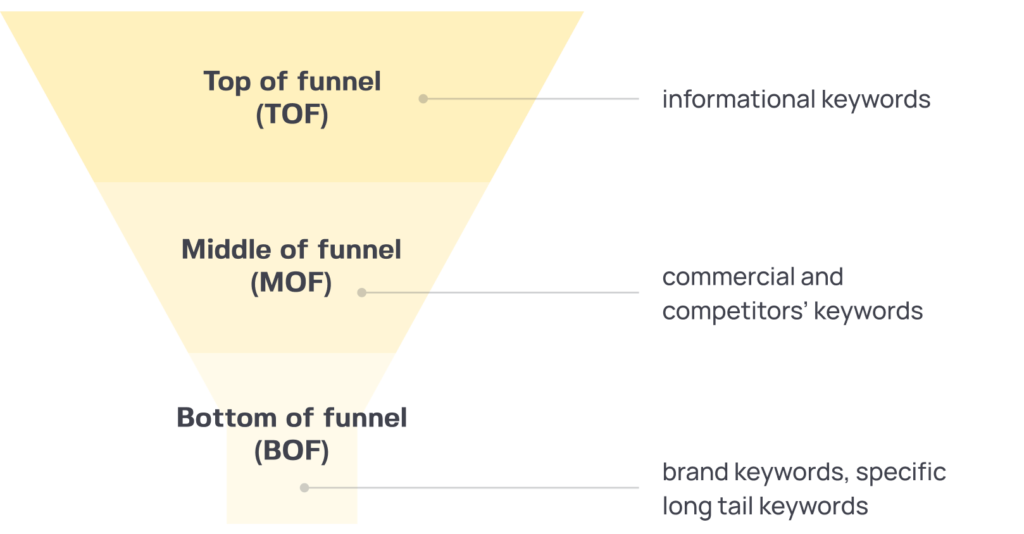
When planning your keyword strategy, don’t forget to create a list of negative keywords. This will help you avoid wasting money on irrelevant clicks, ensuring your budget is spent on prospects who are more likely to convert.
Focus on long-tail keywords
Long-tail keywords may not bring in as much traffic, but they are often more targeted and deliver higher conversion rates. These keywords are ideal, especially if you’re working with a limited budget or offering a very specific product. By targeting longer, more specific terms, you can reduce competition and focus on audiences who are already searching for exactly what you offer.
For example, instead of targeting broad keywords like “PDF editor,” go for more specific phrases such as “convert documents from Word to PDF online” or “architecting for HIPAA compliance on AWS.” These keywords not only attract users who are closer to making a purchase decision but also help you stand out in a less crowded space.
To maximize the value of long-tail keywords, focus on exact-match variants that are likely to perform well. Aim for keywords that have at least 10 searches per month, and use tools like Google Keyword Planner or Semrush/Ahrefs to ensure you’re targeting the right terms.
Incorporating 5-10 well-researched long-tail keywords in each campaign allows you to create more relevant ads, lower your cost-per-click (CPC), and increase your click-through rate (CTR). This strategy ensures you’re getting the best value for your PPC spend.
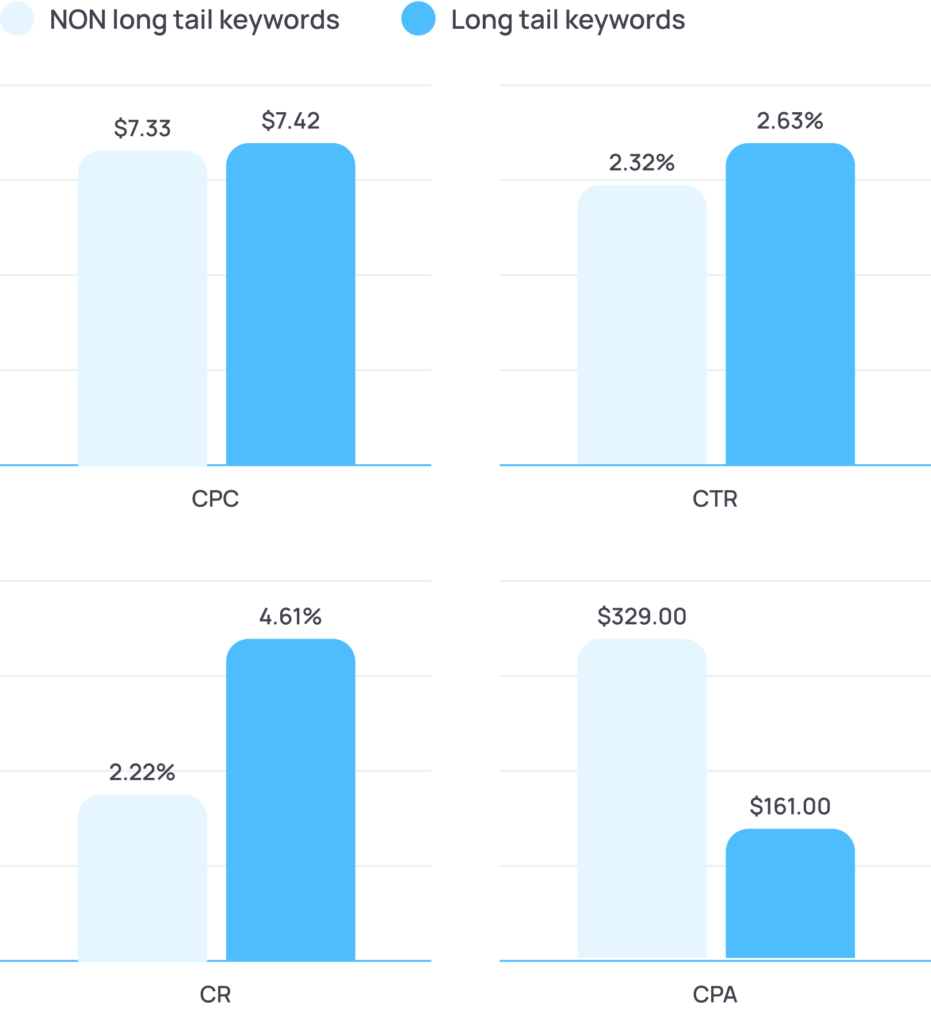
Determine your target audience carefully
When setting up your audiences for Google Display Network (GDN), start with a clear buyer persona—especially if you’re a SaaS company. This will help you craft more effective ads and reach users who are most likely to convert. Test different audience types in Google Ads, including standard options based on interests and in-market topics, as well as custom audiences derived from specific keywords or visitors to related websites or apps.
Be careful not to narrow your targeting too much. While it’s tempting to go after a very specific group, overly restrictive targeting can lead to higher costs per click (CPC) and limit your overall reach. A balanced approach ensures that you’re getting the right audience without overspending.
Budgeting and bidding strategies for PPC campaigns
A well-managed budget and bidding strategy can make or break your PPC campaign. To ensure your ad spend is effective, start by setting a budget that aligns with your goals without cutting into other marketing initiatives. Consider establishing a daily budget to stay in control while experimenting with different tactics and identifying what works best.
When it comes to bidding, the right strategy depends on your campaign objectives. If you’re hands-on, manual bidding gives you control over each keyword’s bid. Alternatively, automated bidding options like Target CPA (Cost Per Acquisition) or Target ROAS (Return on Ad Spend) can adjust your bids automatically to help achieve your performance goals.
Regularly monitor and adjust your bids based on performance data. If certain keywords are generating high-quality traffic, increase your bids to capture more opportunities. On the flip side, lower bids for keywords that aren’t performing as well to make your budget stretch further.
Bid adjustments are another useful tool. They allow you to fine-tune your strategy by factoring in variables like device type, location, and time of day, helping you optimize your reach and spend.
Cycle ads regularly
Ad cycling lets you know what communication works for your business/product in the best way, helping you create the effect oRegularly refreshing your ads is key to keeping your PPC campaigns performing at their best. Ad cycling helps you identify which messaging resonates most with your audience, while also keeping your campaigns fresh and effective. Whether you’re using LinkedIn ads for SaaS or Google ads for SaaS, rotating different ads builds continuous brand awareness and keeps users engaged over time.
Test new ad variations regularly. This is crucial for maintaining strong performance, as ads can lose their impact after a while. By cycling in fresh ad copy every month or even biweekly, you can leverage the success of previous campaigns while reaching new audiences and optimizing your results.
If you notice performance dropping, try adding new ad copies to existing campaigns. This can help the algorithm “re-learn” and re-optimize your ads for better engagement. Additionally, consider creating separate campaigns for weekdays and weekends, adjusting your value propositions and ad designs accordingly to fit the time-specific needs of your audience.
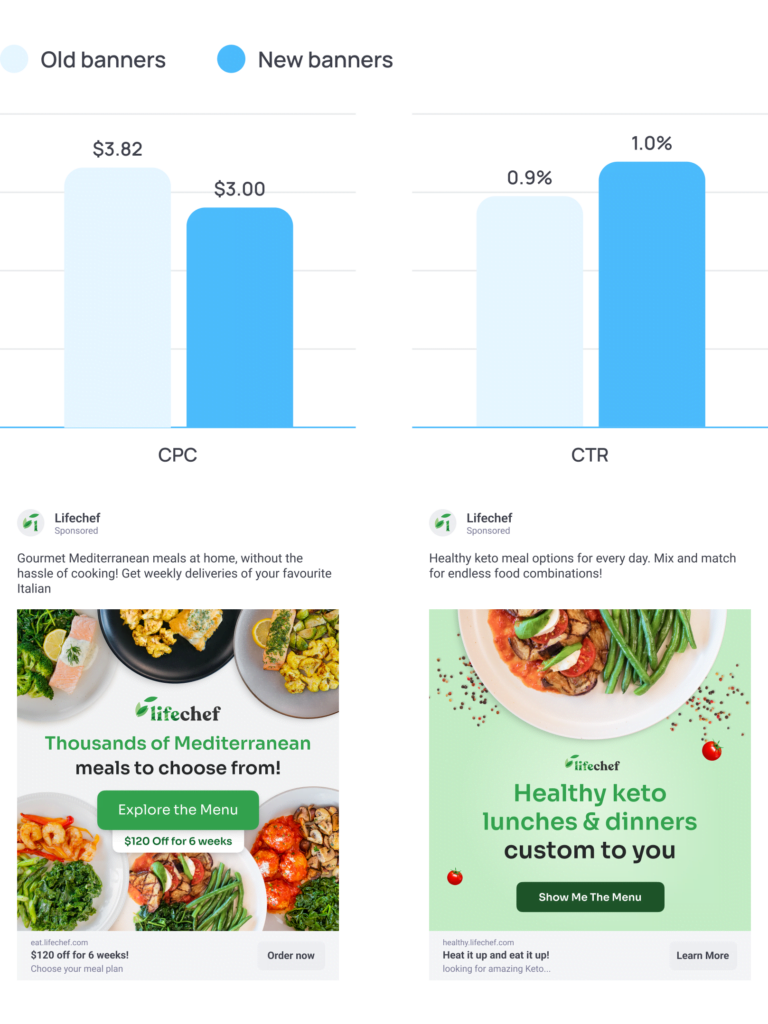
Use remarketing
Remarketing is one of the most powerful ways to boost conversion rates and re-engage users who’ve already shown interest in your product. By targeting people who have visited your website or interacted with your ads, you can remind them about your product and continue educating them on its value, making it more likely they’ll return and convert.
For traditional remarketing, use platforms like Google Display Network (GDN) and YouTube to reach users with tailored ads that keep your product top of mind. A compelling offer or a gentle nudge, through multiple ad impressions (2-5 touches), can effectively increase brand recall and drive conversions.
If you have enough traffic, aim for audience sizes of at least 5,000-10,000 for GDN campaigns and 1,000+ active users for YouTube. From there, create different audiences based on where they are in the buyer’s journey—prospects who are just becoming aware of your product will need different messaging than users who are closer to making a purchase decision.
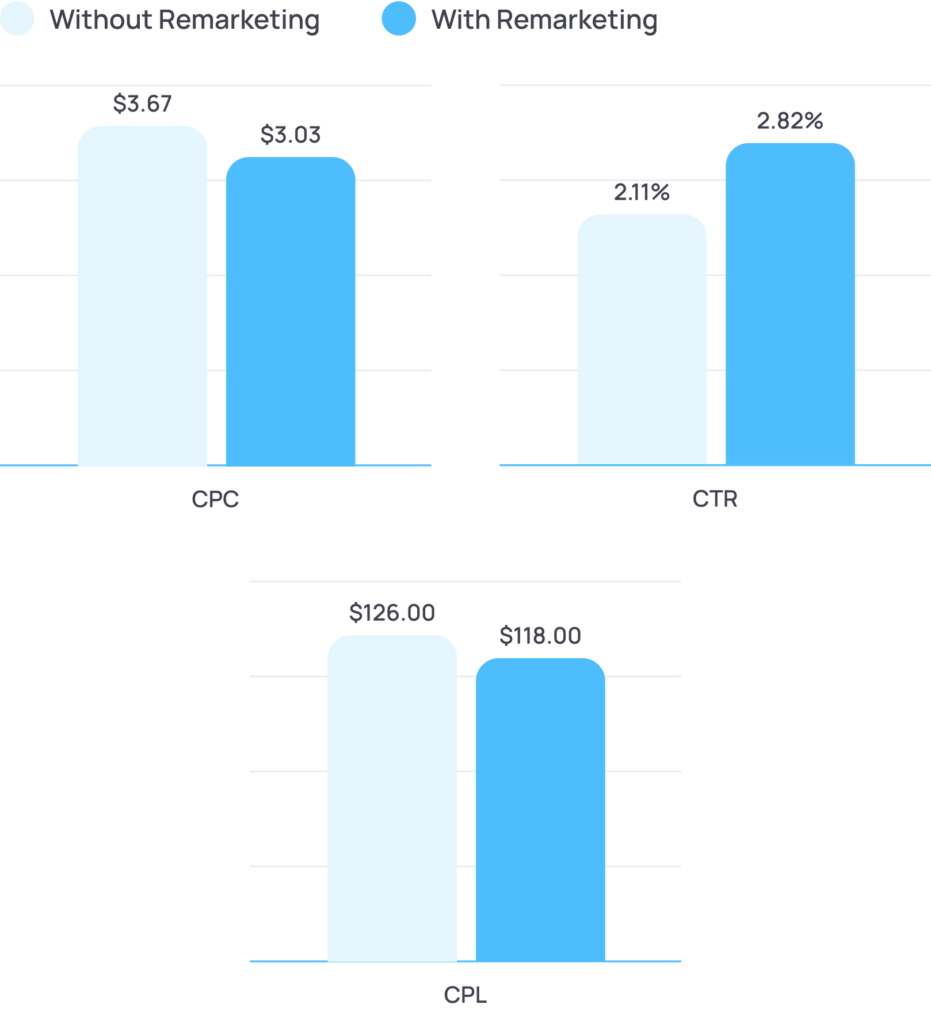
Measuring and analyzing campaign performance
Measuring and analyzing your PPC campaigns is essential to ensuring they’re working as efficiently as possible. Tracking the right metrics helps you identify what’s driving results and where you need to make improvements.
Focus on these key metrics:
- Click-through rate (CTR): This shows the percentage of users who click on your ad after seeing it. A high CTR suggests your ad resonates with your target audience, while a low CTR might mean you need to refine your messaging or targeting.
- Conversion rate: This tracks how many users take a desired action, such as signing up for a trial or making a purchase. A strong conversion rate indicates that your landing page and offer are compelling, while a low rate may highlight areas for improvement.
- Cost per conversion: This metric tells you how much you’re spending to acquire each customer or lead. It’s vital to keep this cost in line with your budget and business goals. If it’s too high, consider optimizing your targeting or adjusting your bids.
- Return on investment (ROI): ROI shows the revenue generated by your campaign relative to its cost. A positive ROI means you’re seeing a return on your investment, while a negative ROI means you need to tweak your approach.
Regularly checking these metrics lets you make adjustments when necessary. If your CTR is low, maybe it’s time to update your ad copy or explore new targeting strategies. If conversions are low, take a closer look at your landing page and offer to see how you can improve them.
Treating PPC as a long-term investment
PPC for SaaS is not a shortcut to quick results; it’s a long-term strategy that pays off over time. Rather than expecting instant success, focus on continuous improvement, optimization, and adapting to market feedback. This approach allows SaaS businesses to turn PPC into a reliable growth engine that generates consistent, long-term revenue.
Working with a SaaS PPC agency can help guide you in making data-driven decisions, ensuring your efforts are optimized and aligned with your business goals. At 42DM, we specialize in helping SaaS businesses make the most of their PPC efforts, providing expert insights that help refine your campaigns for maximum impact. Success comes from regularly reviewing campaign data to identify top-performing ads, keywords, and audience segments. Once you’ve spotted what works, increase budgets for those areas and make smarter decisions based on performance. Staying flexible and adjusting your strategy as needed will help you get the best results.
A long-term mindset allows SaaS companies to develop more advanced PPC strategies over time. By adjusting bids and refining your approach, you can ensure every dollar spent is working hard for you. The longer you invest in PPC, the more valuable data you collect, allowing you to improve targeting and ad relevance over time.
Get the most out of brand demand
Building brand awareness is essential for driving demand, but it’s important to remember that awareness campaigns are focused on creating visibility rather than immediate sales. Video campaigns are particularly effective for brand awareness. For example, YouTube video ads can be a powerful way to showcase your product in more detail. Keep the video short—ideally under 30 seconds—and ensure that your brand and key message are clear within the first 6 seconds, as many users tend to skip ads quickly.
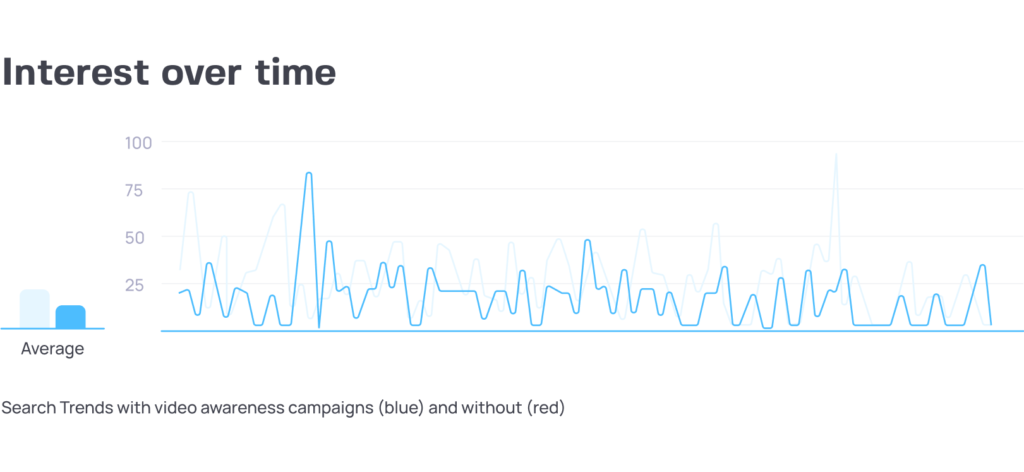
When driving awareness, it’s also critical to leverage a branded keyword strategy. Branded keywords are terms directly associated with your brand, products, or services. These keywords are a strong indicator of brand recognition and signify that users are already familiar with your offering. Targeting these keywords ensures you’re capturing high-quality leads who are actively searching for your brand.
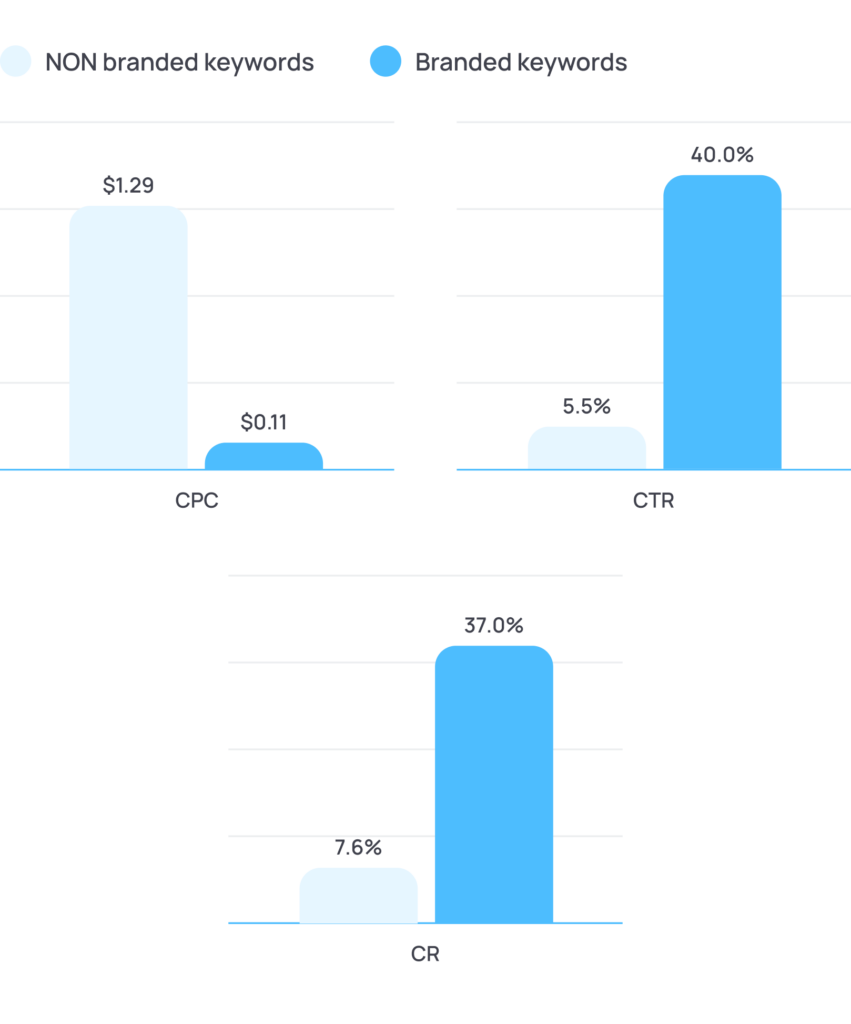
However, it’s crucial not to overlook competitors who may target your branded keywords. If you notice competitors bidding on your brand terms, it’s time to create a separate campaign specifically focused on your brand. Make sure to capture as much of the impression share in the top 3 search results as possible to maintain visibility and prevent competitors from stealing your traffic.
Optimizing for mobile and cross-device conversions
With more users switching between devices, it’s crucial to optimize your PPC campaigns for mobile and cross-device conversions. Ensuring a smooth experience across all devices can make a significant impact on your campaign performance.
- Mobile-friendly landing pages: Make sure your landing pages are designed for mobile. This includes a responsive layout, fast loading times, and easy navigation. A seamless experience on mobile can increase your conversion rates, as users are more likely to convert when the experience is smooth.
- Cross-device targeting: Use Google Ads’ cross-device targeting to reach users as they move between smartphones, tablets, and desktops. This ensures your ads stay relevant and maintain consistency across different devices, helping you stay in front of your audience no matter how they browse.
- Cross-device conversion tracking: Set up tracking to capture conversions across all devices. This gives you a complete view of your users’ journey, showing how they interact with your ads on different platforms. Tools like Google Analytics can help track these conversions, giving you the insights you need to adjust your campaigns effectively.
Common challenges in SaaS PPC campaigns
PPC can be a powerful tool for SaaS companies to quickly fill their pipeline with leads, but the unique nature of the SaaS business model presents its own set of challenges. Understanding these challenges is key to creating effective campaigns that drive results.
Recognizing the complexity of the SaaS sales cycle
The SaaS sales cycle is typically longer than that of e-commerce, involving multiple stages from brand awareness to conversion. Unlike e-commerce, where customers can make immediate purchases, SaaS requires more time spent educating prospects and addressing their concerns.
This extended cycle impacts PPC performance, as it may take weeks or even months for a lead to convert into a paying customer. However, SaaS leads are often more valuable, converting at a rate 50% higher than organic leads.
To maximize your PPC spend, use offers like webinars and free trials to nurture prospects and move them through the sales funnel. This ensures you’re consistently engaging with leads and helping them make an informed decision over time.
Measuring ROI accurately
Calculating ROI for SaaS PPC campaigns can be tricky because of the multiple touchpoints a customer goes through before converting. A user might first click on an ad, then sign up for a free trial, download a case study, and finally convert weeks later. Each interaction plays a role in their decision, making it challenging to pinpoint exactly which ad or touchpoint had the most influence.
To get a clearer picture of ROI, use tools like Google Analytics and your CRM platform to attribute value across each stage of the customer journey. These tools can help you track the entire process, from initial ad clicks to final conversions.
Regularly tracking metrics like cost-per-acquisition (CPA) and customer lifetime value (CLTV) will give you better insight into how well your PPC campaigns are performing and where to make adjustments. By understanding the full journey, you can optimize your strategies and allocate your budget more effectively.
The need for continuous optimization
SaaS PPC campaigns are competitive, and the pressure is only increasing. Dentsu’s forecast indicates a 5.9% growth in global ad spend for 2025, showing that businesses are continuing to invest more in advertising. As a result, your competitors are likely bidding on the same keywords, driving up your cost-per-click (CPC)—especially for high-demand SaaS keywords.
To stay ahead, it’s crucial to regularly review your campaign performance and make adjustments. This might include pausing underperforming keywords, refining your ad copy, or testing new variations. Small changes like these can significantly improve your ROI and prevent wasted spend. Ongoing testing and adjustments are key to keeping your PPC campaigns effective and ensuring they’re always working towards your goals.
Overly narrow audience targeting
Focusing too narrowly on your audience targeting can limit your reach and hinder conversions. SaaS products often appeal to a variety of industries and roles, so being overly specific with your filters can prevent you from reaching potential customers who might still be interested in your product.
For example, if you limit your targeting to just IT managers, you might miss out on other key decision-makers, such as marketing leaders or executives, who play an important role in purchasing decisions.
Reaching the wrong audience
Even seasoned SaaS marketers can struggle with targeting the right audience. Getting your ads in front of the right people is key to success, and audience segmentation plays a big part in that.
To improve targeting, focus on different factors like demographics, job titles, and even psychographics, such as pain points. For example, a project management SaaS might want to target team leads with one set of ads, while tailoring another set for C-suite executives.
A/B testing helps refine these segments further, allowing you to fine-tune your approach and focus on the users who are most likely to convert.
Ineffective ad copy and design
Ad copy and design are the first impressions potential leads have of your brand, so it’s important to make it count. Clear, concise messaging that highlights your SaaS product’s unique benefits is crucial.
If your tool helps users save time by automating manual tasks, make that clear right away. Strong calls-to-action like “Start Your Free Trial Today” create a sense of urgency and encourage immediate action.
When it comes to visuals, choose images, infographics, or one-pagers that speak to your audience. The design should be professional yet engaging—nothing too generic. Poor design or bland, cookie-cutter copy leads to wasted ad spend and missed opportunities.
Low-quality score and high CPC
Google assigns a Quality Score to each ad, based on its relevance, click-through rate, and landing page experience. A lower Quality Score means higher CPC, making your ads less cost-effective.
To improve your Quality Score and lower your CPC, ensure your ad copy matches the keywords and is relevant to the landing page. For example, if your ad is about a CRM tool, your landing page should focus on CRM features, providing a seamless experience from ad to conversion.
Long sales cycles and customer education
SaaS sales cycles often take time, and that’s okay. To keep prospects engaged, use targeted PPC campaigns that nurture leads through the process. Working with a SaaS PPC advertising firm can help you craft strategies that effectively educate your audience and move them through the funnel.
These campaigns can raise awareness for valuable assets like whitepapers, tutorials, and free trials. Retargeting ads can then be highly effective, reminding users of your product when they are comparing options.
For example, an ad featuring a relevant case study can help sway a hesitant lead. Providing educational content builds trust and keeps your brand top of mind when the lead is ready to make a decision.
Final Thoughts
PPC is an essential tool for SaaS businesses aiming to generate qualified leads and boost brand visibility. By applying the strategies we’ve discussed, you can ensure your campaigns are efficient and cost-effective, helping you maximize your ad spend.
Whether you’re running your PPC campaigns in-house or partnering with a SaaS advertising agency, the key is to align your strategy with your business goals. At 42DM, we specialize in helping tech companies optimize their marketing efforts, turning clicks into valuable customers and driving sustainable growth.Ready to improve your SaaS PPC results? Reach out to us today, and let’s work together to create a tailored strategy that delivers measurable success.


